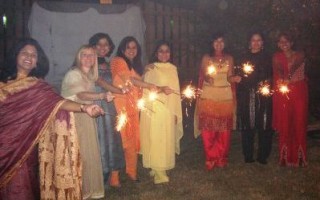
Growing up in India, Diwali was a huge affair. It is a festival celebrated by all of India (Hindu or not), sort of like New Year’s. Known as the festival of lights, the victory of good over evil, homecoming of Lord Rama and welcoming Goddess Lakshmi, Diwali is the biggest festival in India. The scene […]
My wife Mary and I made our first trip to India last September on a tour which included Agra, Jaipur and New Delhi, known as the Golden Triangle. While we enjoyed the comfort and convenience of guided tours, we arrived in New Delhi early for two homestays to be able to connect with some of […]
One of my favorite drinks during summers in India was Rooh Afza, a refreshing rose concentrated drink. Rose flavored syrup that came in a bottle was added to ice cold water or milk and served over ice and found at every household. It was a perfect break in the hot afternoons; especially when guests came […]
Chicken curry is a popular dish in India, served at every household and restaurant. The preparation however varies from region to region. The Karwar version of the chicken curry includes coconut and a concoction of spices. These are not your typical out of the box seasoning and a visit to an ethnic grocery store would […]
When I visited Iceland in 2009, I wasn’t sure what to expect from its culinary scene. Iceland has known to be exorbitantly expense due to its distant location, extreme climate and scarce population. Out of its 300k citizens, only 4% of the population is employed in agriculture. They primarily grow potatoes, turnips, carrots, tomatoes and cucumbers. […]
I spent New Year’s Eve 2011 at the Leela Palace Kempinski hotel in Bangalore. It was a magnificent palace converted into a 5-star hotel, rated as one of the best in India. The architecture and gardens of the property are worth considering a tourist destination itself! Even their restaurant is rated the best in town. […]
India seems to have becomes a popular destination for many in recent years. In addition to the 5 million visitors each year, there are the corporate executives looking to expand business, spiritual seekers headed to an Ashram, novelists and films crews capturing local stories, nonprofits discovering opportunities to solve some deep rooted problems and cultural […]
My friends travelling with me must be tired of listening to me say “This reminds me of India” dozens of times since we came here. In fact, there are a lot of similarities between India and Morocco, to say the least. Here are a few worth pointing out… Over crowdedness: When I was walking around […]